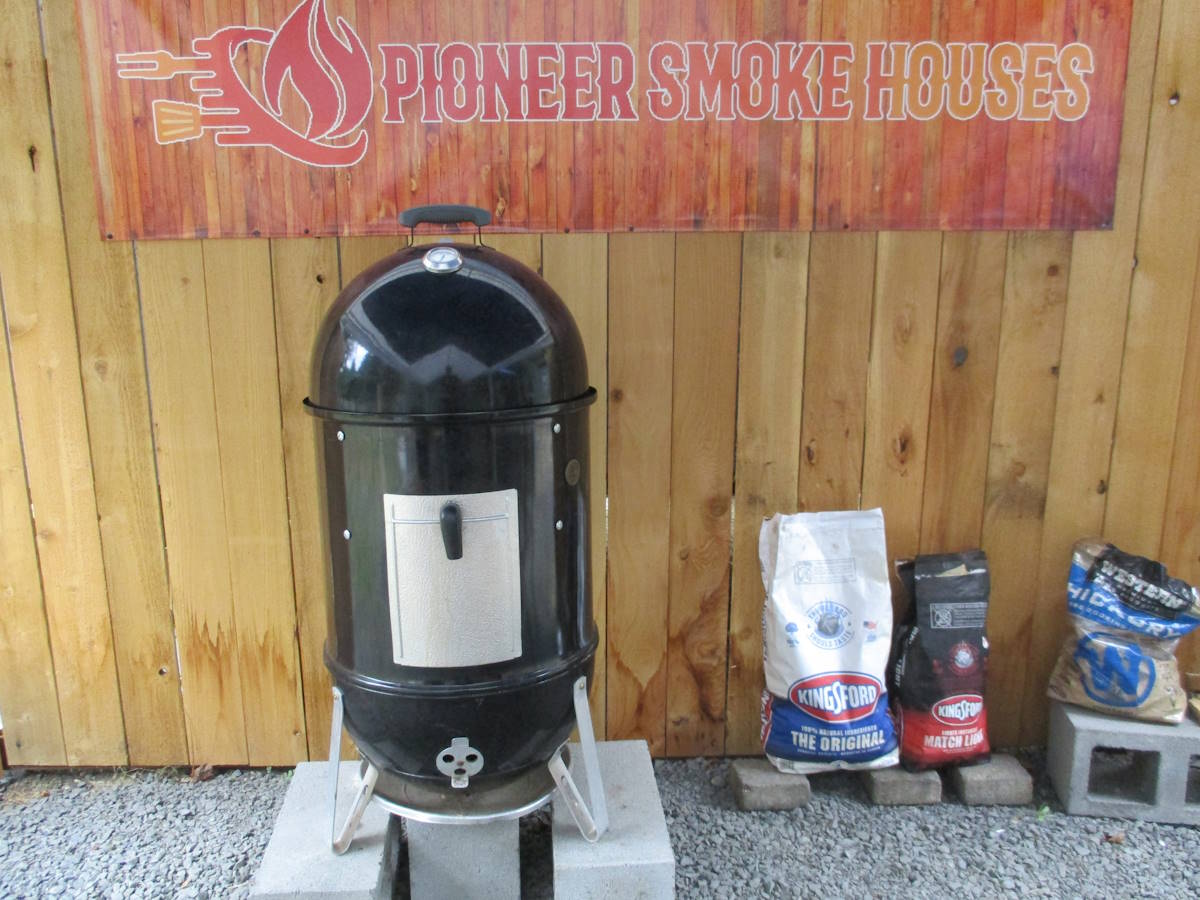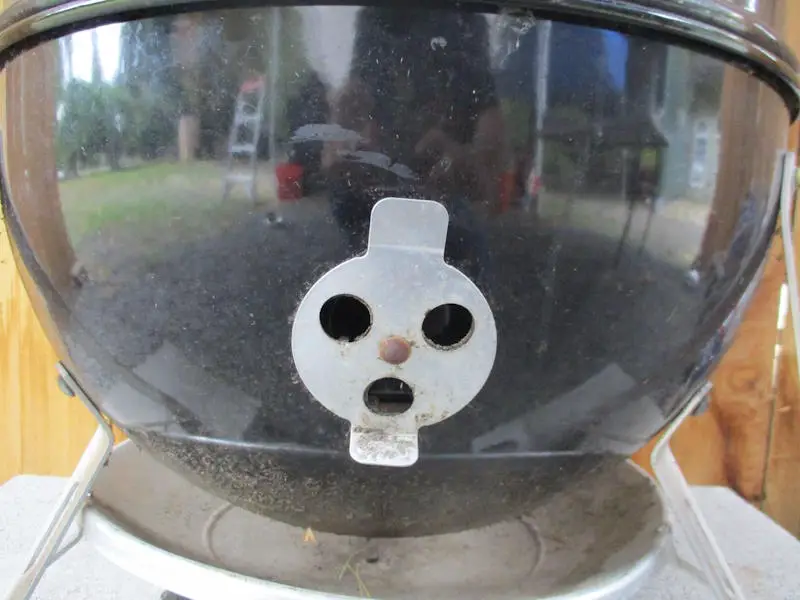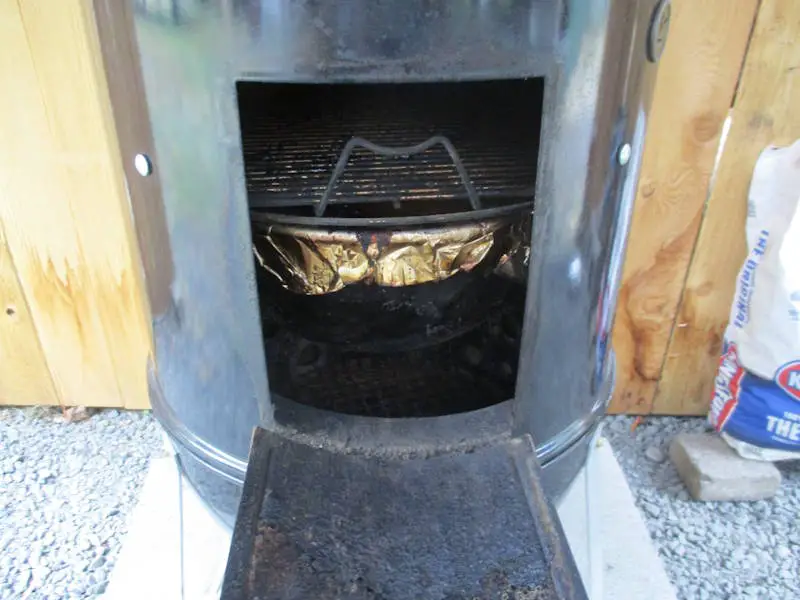
Welcome to our blog post dedicated to helping you master the Weber Smokey Mountain Cooker. In this guide, we will provide you with expert tips that will take your smoking and temperature control skills to the next level.
Whether you are a seasoned pitmaster or just getting started, these tips will help you achieve perfectly smoked and flavorful results every time you fire up your Weber Smokey Mountain Cooker. So, without further ado, let’s dive into the essential tips for mastering the art of cooking on the Weber Smokey Mountain Cooker.
Introduction to the Weber Smokey Mountain Cooker and its benefits
The Weber Smokey Mountain Cooker features a unique design with three layers, allowing for efficient airflow control and even heat distribution. The cylindrical shape of the cooker maximizes cooking space, making it ideal for smoking large cuts of meat or multiple racks of ribs.
One of the main benefits of this smoker is its ability to maintain a consistent low temperature over long periods, which is crucial in achieving tender and flavorful smoked meats. Additionally, its porcelain-enameled steel construction ensures durability and easy maintenance.
The built-in water pan adds moisture during the smoking process, preventing meats from drying out while imparting a gentle steam that enhances flavors. With precise temperature control, generous capacity, and reliability, the Weber Smokey Mountain Cooker is an essential tool for professionals looking to elevate their barbecue game.
Setting up the Weber Smokey Mountain Cooker for optimal smoking
Setting up the Weber Smokey Mountain Cooker is super easy, and anyone can do it with a little practice. The smoker is made up of three main parts: the base where you put the charcoal, the middle part that holds the shelves, and the lid. Once you have read the instructions in the manual and put everything together, it’s time to have some fun!
First, fill the base with the charcoal you like and add a few pieces of wood. Light 12 briquettes in a charcoal chimney, and when they are burning well, pour them right in the middle of the charcoal in the base.
Wait five minutes, then put on the middle part and the lid, making sure the vents are fully open. After another five minutes, adjust the vents to control the temperature.
The smoker also has a water pan that helps keep the temperature even and prevents hot spots on the grill. Some people like to add water to the pan. I prefer to fill it with lava rock and double-wrap it with foil. When the first layer of foil is covered with grease, replace it with a new, clean piece of foil.
Finally, put in the grill grates, and you are ready to start smoking! Most of the cooking is usually done on the top grate, and some people even leave out the bottom grate altogether.
Using different types of wood types for flavor enhancement
The Weber Smokey Mountain Cooker is a versatile cooking device that allows for precise airflow control. Because of the ability to control the airflow precisely, adding a small amount of wood can change the flavor dramatically.
In terms of loading wood in the Weber Smokey Mountain, there are two primary strategies that are commonly employed. But don’t worry, it’s not too complicated! Both ways use blocks of wood that are 3 by 3 inches in size.
The first way is to put three blocks of wood on the edges of the charcoal pan before you put the charcoal in. You arrange the wood blocks in a triangle pattern, then carefully add the charcoal.
The second way is to fill and light the charcoal first, then put three wood blocks on top of it in a triangle pattern. The first way makes the food taste cleaner, while the second way gives it a smokier flavor.
When it comes to enhancing flavor, the choice of wood types plays a crucial role. Utilizing different woods can impart unique characteristics to the meat, elevating the overall taste profile.
For instance, fruitwoods such as apple or cherry lend a delicate and sweet aroma that pairs exceptionally well with poultry or pork. On the other hand, hickory offers a robust and hearty flavor, ideal for beef or lamb.
Meanwhile, mesquite imparts a strong and earthy essence, perfect for bold-flavored meats like brisket or ribs. At Pioneer Smoke Houses, we live by a simple rule: when in doubt, get the pecan out.
Pecan has a subtle, sweet flavor but can still bring that coveted wood profile like post-oak. By experimenting with various wood types in the Weber Smokey Mountain Cooker, professional pitmasters can achieve a level of culinary artistry that tantalizes taste buds and leaves lasting impressions on diners.

Controlling temperature and airflow during the smoking process
Controlling temperature through airflow during the smoking process in a Weber Smokey Mountain Cooker is essential for achieving optimal results. The design of the cooker includes adjustable vents at both the bottom and top, allowing for precise regulation of airflow throughout the chamber.
By controlling the intake and exhaust vents, grillmasters can effectively manage heat and smoke distribution within the smoker. Opening the vents wider increases oxygen flow, leading to higher temperatures ideal for fast and hot smokes.
On the other hand, partially closing the vents restricts air movement, resulting in lower temperatures suitable for slow cooking and smoking meats that require time for the connective tissue to break down.
A key aspect of mastering the art of smoking in the WSM is properly controlling the airflow to maintain a consistent temperature and clean smoke throughout the entire cooking process. This level of control ensures that food is evenly cooked, moist, and infused with delicious smoky flavors.
After the charcoal is well lit and the smoker is assembled, completely close the two bottom vents facing the back of the smoker. Then, insert a pencil or metal tube (like a metal straw) in the top vent and close the vent; repeat this process for the bottom front vent. The vents should be open about ¼ inch for minimum airflow to maintain a clean burn.
Keep an eye on the temperature for about 15 minutes. If you need more heat, slowly open the vents together. But remember, do not open them too much all at once, or you might end up with too much heat! The only time you should close the vents completely is when you are done cooking and want to put out the remaining charcoal.
By controlling the airflow with these vents, you will be able to keep a consistent temperature and make sure your food is cooked evenly and full of delicious smoky flavors. So have fun experimenting with your Weber Smokey Mountain Cooker, and enjoy your tasty creations!
Monitoring and maintaining consistent heat throughout the cooking process
Monitoring the temperature throughout the cooking process in a Weber Smokey Mountain Cooker is crucial for achieving perfect smoked dishes every time. The innovative design of this smoker ensures consistent heat distribution, but it is still imperative to keep a close eye on the internal temperature to ensure optimal results.
The built-in lid thermometer provides a general indication of the cooker’s internal temperature, but to obtain accurate readings at the food level, an additional probe thermometer should be utilized. This enables monitoring of both ambient temperature and meat temperature simultaneously, guaranteeing precise control over cooking stages and preventing undercooking or overcooking.
A wireless probe is a great way to monitor both the meat’s internal temperature and the Smoker’s ambient temperature; we use the ThermoPro Temp Spike. Also, a wired dual probe thermometer will work quite well in a WSM because of the passthrough gourmet on the upper side of the smoker’s body.
Masters of the Weber Smokey Mountain Cooker recommend regularly checking temperatures every 30-45 minutes while adjusting vent openings accordingly to maintain targeted heat levels. As mentioned in the previous section, increasing the airflow will increase the smoker’s temperature, and decreasing the airflow will lower the temperature. Make these changes in small increments to avoid huge temperature swings.
By diligently monitoring the temperature and adjusting throughout the cooking process, one can ensure that each culinary creation emerges from this exceptional smoker with a delightfully smoky flavor and tender texture that will impress even the most discerning palate.

Techniques to reload charcoal to the Weber Smokey Mountain Cooker during a cook
When it comes to reloading charcoal during a cook on the Weber Smokey Mountain Cooker, there are several techniques that can ensure optimum results.
Firstly, maintaining the desired temperature is crucial. Before adding new charcoal, it’s essential to open all vents fully for increased air circulation and combustion.
The existing ash should be carefully cleared using an ash tool or a gloved hand, creating space for fresh coals. Once the ashes are removed, new unlit charcoal can be added to the firebox in a well-arranged manner, ensuring uninterrupted airflow.
To prevent temperature fluctuations and maintain consistency, a chimney starter filled with briquettes can be preheated while the old coals are being cleared. This way, when it’s time to reload, the lit charcoal from the chimney starter rapidly ignites the fresh briquettes without significantly affecting the cooking temperature.
By practicing these methods and closely monitoring the grill’s internal temperature throughout reloads, one can achieve professional-level precision and deliciously consistent results with their Weber Smokey Mountain Cooker barbecue experience.
In Conclusion
To master the Weber Smokey Mountain Cooker is all about managing the smoke and temperature. Controlling the smoke and temperature is easy to achieve with some practice
By following the tips provided on setup, wood selection, airflow, and temperature monitoring, you can ensure the best results from your cooking experience. For a more comprehensive review of the Weber Smokey Mountain Cooker, be sure to check out our full article. Happy smoking!
Don’t forget these tips will improve your smoking technique for any vertical charcoal smoker.

